Shanghai Expo 2010: The U.K. Pavilion
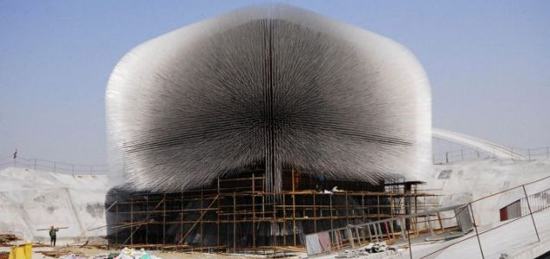 The 2010 World Exposition in Shanghai will be the first registered one in a developing country. Officially known as “Expo Shanghai 2010,” it will last 184 days and provide China an opportunity to show off its remarkable economic growth. The expo will also give foreign nations and companies a chance to further develop business partnerships with China and Chinese companies. This is the eleventh in an ongoing series that will look at the upcoming expo, from country pavilions to trade development. In this article, we take a look at the U.K. Pavilion.
The 2010 World Exposition in Shanghai will be the first registered one in a developing country. Officially known as “Expo Shanghai 2010,” it will last 184 days and provide China an opportunity to show off its remarkable economic growth. The expo will also give foreign nations and companies a chance to further develop business partnerships with China and Chinese companies. This is the eleventh in an ongoing series that will look at the upcoming expo, from country pavilions to trade development. In this article, we take a look at the U.K. Pavilion.
By Peter Higgins
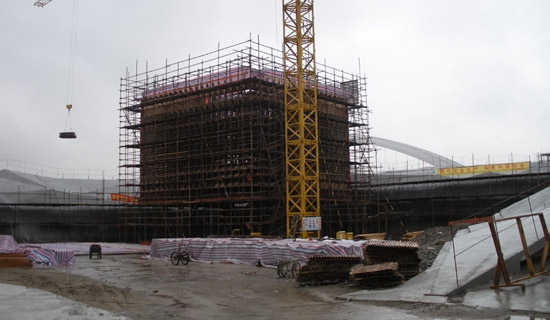 Mar. 12 – The Crystal Palace, which housed the first World Expo in 1851 in London, stunned visitors with its advanced, creative design, featuring 13,000 exhibits inside its glass and iron frame. For the more than six million people who visited the site during the Expo, the Crystal Palace portrayed the United Kingdom as a cutting-edge nation and British organizers are hoping that this year’s Seed Cathedral at Expo 2010 in Shanghai will do the same.
Mar. 12 – The Crystal Palace, which housed the first World Expo in 1851 in London, stunned visitors with its advanced, creative design, featuring 13,000 exhibits inside its glass and iron frame. For the more than six million people who visited the site during the Expo, the Crystal Palace portrayed the United Kingdom as a cutting-edge nation and British organizers are hoping that this year’s Seed Cathedral at Expo 2010 in Shanghai will do the same.
Funding for the pavilion is being raised through a public-private partnership with five British corporations participating. Diageo, BP, GKN, AstraZeneca, and Barclays have all pledged upwards of US$772,500 (£500,000) each. Public sector funding is responsible for the rest of the Expo cost, which is expected to total more than US$37 million, including US$22 million for the structure itself.
Recognizing that London is one of the greenest cities of its size in the world, the U.K. Pavilion is designed to highlight the country’s long history of bringing nature into its cities. The theme, “Building on the Past, Shaping our Future,” together with the innovative design, is meant to challenge Chinese perceptions of Great Britain as traditional and stuffy.
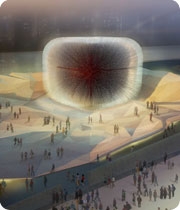 At the center of the pavilion is the Seed Cathedral, which is a six-story structure formed by 60,000 transparent rods that sway in the wind and contain fiber-optic filaments. They draw natural light during the day to illuminate the interior and draw interior light at night, which allows the whole structure to glow. The rods will also contain tens of thousands of seeds provided by Kunming Institute of Botany in partnership with Kew Millennium Seed Bank. In keeping with the theme of sustainability, the seeds will be reused after the Expo for charity and cultural exchanges.
At the center of the pavilion is the Seed Cathedral, which is a six-story structure formed by 60,000 transparent rods that sway in the wind and contain fiber-optic filaments. They draw natural light during the day to illuminate the interior and draw interior light at night, which allows the whole structure to glow. The rods will also contain tens of thousands of seeds provided by Kunming Institute of Botany in partnership with Kew Millennium Seed Bank. In keeping with the theme of sustainability, the seeds will be reused after the Expo for charity and cultural exchanges.
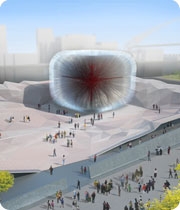 The Seed Cathedral sits on top of a 6,000 square meter landscape that resembles unfolded wrapping paper, which symbolizes the pavilion’s role as a gift from the United Kingdom to China. Inside visitors will move through three walkways. The first presents the modern British urban landscape, including the history of its development. The visitor will travel through models of the U.K. capitals of Belfast, Cardiff, Edinburgh, and London, which highlight their many public parks. On the second walkway, visitors will see a model of a typical British city suspended from the ceiling, which illustrates how cities in Britain embrace nature. The final walkway features a river of imaginary and real plants, which challenges the spectator to imagine urban life that harnesses the power of nature and technology.
The Seed Cathedral sits on top of a 6,000 square meter landscape that resembles unfolded wrapping paper, which symbolizes the pavilion’s role as a gift from the United Kingdom to China. Inside visitors will move through three walkways. The first presents the modern British urban landscape, including the history of its development. The visitor will travel through models of the U.K. capitals of Belfast, Cardiff, Edinburgh, and London, which highlight their many public parks. On the second walkway, visitors will see a model of a typical British city suspended from the ceiling, which illustrates how cities in Britain embrace nature. The final walkway features a river of imaginary and real plants, which challenges the spectator to imagine urban life that harnesses the power of nature and technology.
The U.K. Pavilion will also feature daily programming that will be accessible to all ages. Capitalizing on the United Kingdom’s long history of theater and its contemporary art scene, original comedy performances will take place throughout the Expo. During a press conference, Great Britain’s Ambassador to China said, “I encourage all the Chinese families to visit the British pavilion, which would demonstrate the vitality and creativity of the United Kingdom. They would have a wonderful time.”
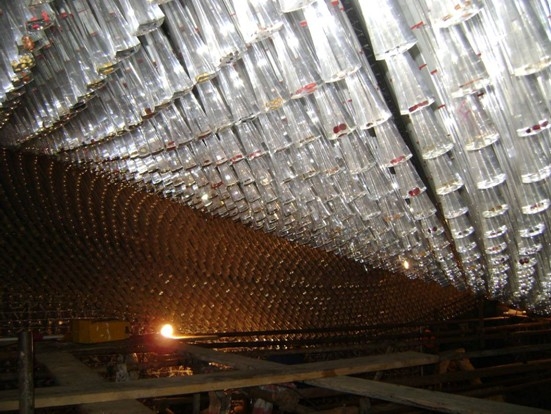 The design was created by London based Heatherwick Studio. Founded in London in 1994 by Thomas Heatherwick, the firm is also responsible for world-famous projects such as London’s Rolling Bridge and Longchamp’s flagship New York store. Along with the U.K. pavilion, Heatherwick is in the process of redeveloping Hong Kong’s famous Pacific Place shopping center.
The design was created by London based Heatherwick Studio. Founded in London in 1994 by Thomas Heatherwick, the firm is also responsible for world-famous projects such as London’s Rolling Bridge and Longchamp’s flagship New York store. Along with the U.K. pavilion, Heatherwick is in the process of redeveloping Hong Kong’s famous Pacific Place shopping center.
With the 2012 London Olympic and Paralympic games approaching, the United Kingdom will also be using its pavilion to strengthen its economic relationship with China. According to Katherine Dixon, the Political, Economic and Press Consul for the British Consulate in Shanghai, “We see Expo as a once in a generation opportunity to showcase the best of British innovation and creativity. Expo will bring together officials and decision-makers from across all Chinese Government departments during a six month period of heightened interest in all overseas-based businesses.”
In 2008 Britain imported US$44.25 billion worth of Chinese goods while exporting US$8.26 billion worth of goods to China, which makes it the largest market for British goods in Asia. Commenting on the importance of the relationship, Dixon said, “The U.K. Pavilion is an incredible focal point, but we also need to engage the local government decision-makers and business leaders across the full range of U.K. strengths in an exciting way. Our business program is a central component of our Expo content.” Details about the program’s events, which will focus on key sectors of the British economy, can be found here.
The U.K. Pavilion will showcase today’s modern, diverse Britain much as Crystal Palace did in 1851, but on a much bigger scale with 70 million visitors expected at this year’s Expo. For Britain, success will mean a stronger Sino-British economic and business relationship, as well as increased trade.
Further Reading
The Complete 2010 Shanghai Expo Series
- Previous Article Chris Devonshire-Ellis: Triggering Permanent Establishment in China Representative Offices
- Next Article Shanghai Expo 2010: The Australian Pavilion









